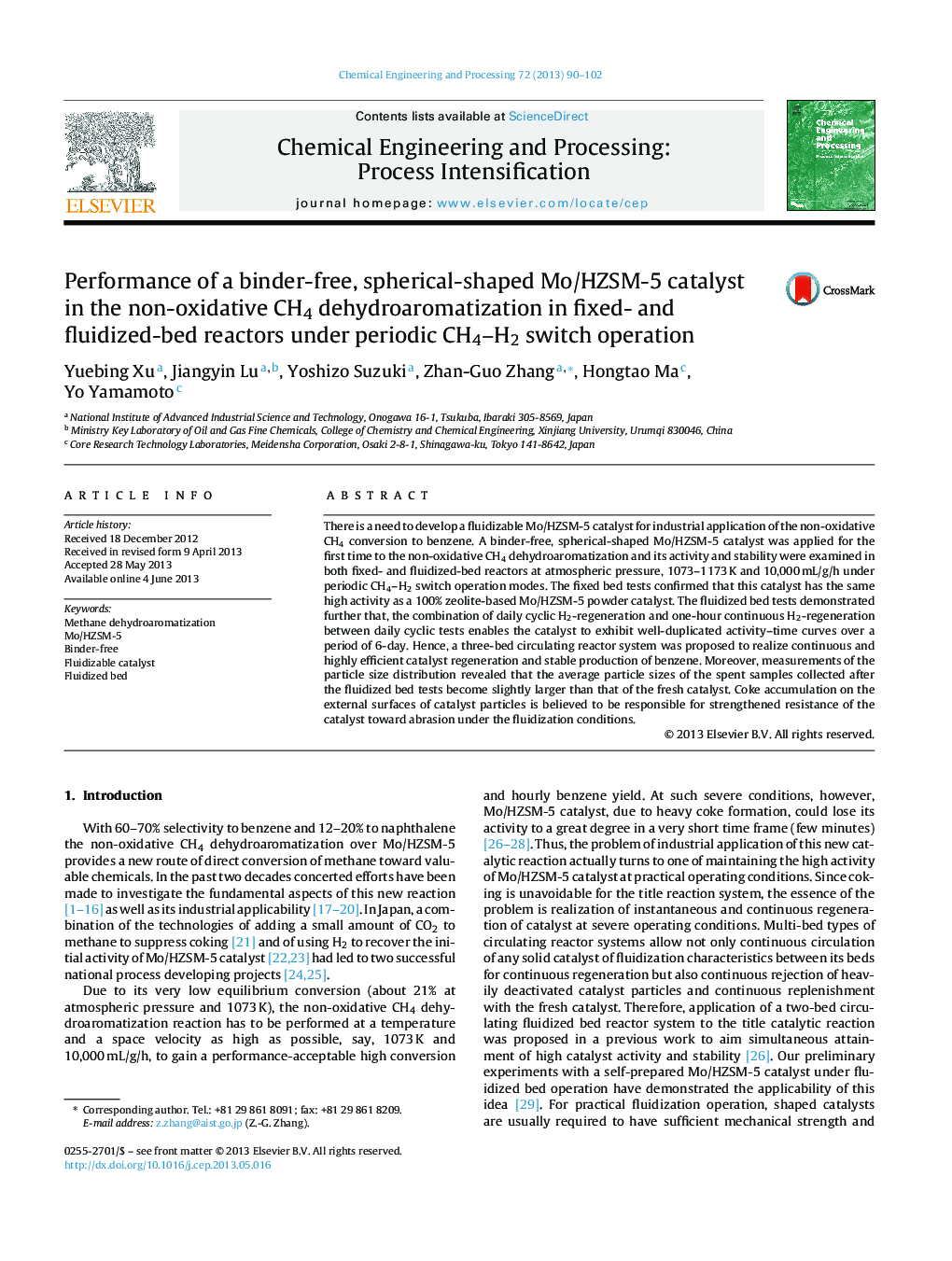| کد مقاله | کد نشریه | سال انتشار | مقاله انگلیسی | نسخه تمام متن |
|---|---|---|---|---|
| 686994 | 1460105 | 2013 | 13 صفحه PDF | دانلود رایگان |

• Fluidizable Mo/HZSM-5 is needed for application of non-oxidative CH4 conversion.
• A binder-free, spherical-shaped Mo/HZSM-5 was tested in a fluidized bed at 1073 K.
• The catalyst exhibits high activity and stability under fluidized bed operation.
• No decrease in the average particle size was observed after fluidized bed tests.
• A three-bed circulating system enables efficient regeneration of coked catalyst.
There is a need to develop a fluidizable Mo/HZSM-5 catalyst for industrial application of the non-oxidative CH4 conversion to benzene. A binder-free, spherical-shaped Mo/HZSM-5 catalyst was applied for the first time to the non-oxidative CH4 dehydroaromatization and its activity and stability were examined in both fixed- and fluidized-bed reactors at atmospheric pressure, 1073–1173 K and 10,000 mL/g/h under periodic CH4–H2 switch operation modes. The fixed bed tests confirmed that this catalyst has the same high activity as a 100% zeolite-based Mo/HZSM-5 powder catalyst. The fluidized bed tests demonstrated further that, the combination of daily cyclic H2-regeneration and one-hour continuous H2-regeneration between daily cyclic tests enables the catalyst to exhibit well-duplicated activity–time curves over a period of 6-day. Hence, a three-bed circulating reactor system was proposed to realize continuous and highly efficient catalyst regeneration and stable production of benzene. Moreover, measurements of the particle size distribution revealed that the average particle sizes of the spent samples collected after the fluidized bed tests become slightly larger than that of the fresh catalyst. Coke accumulation on the external surfaces of catalyst particles is believed to be responsible for strengthened resistance of the catalyst toward abrasion under the fluidization conditions.
Figure optionsDownload as PowerPoint slide
Journal: Chemical Engineering and Processing: Process Intensification - Volume 72, October 2013, Pages 90–102